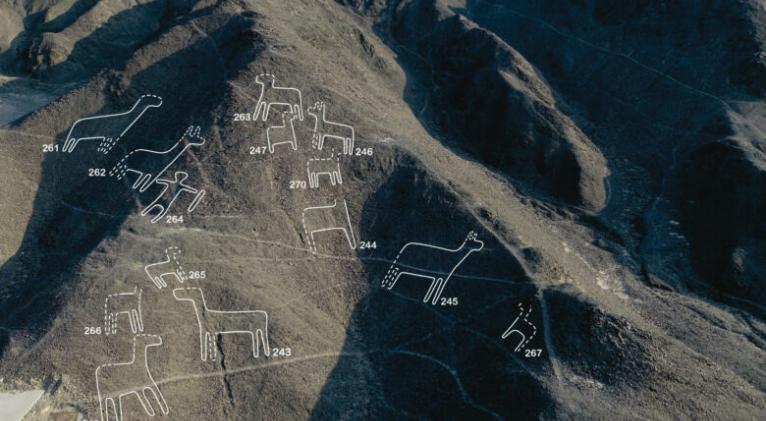Peru’s Nazca lines were paths for prehistoric culture: Japanese researchers
especiales

Tokyo, 16 Jan (EFE).- The mysteries shrouding Peru’s Nazca Lines have intrigued scientists for decades. Now, a group of Japanese researchers has developed a new theory that the geoglyphs etched into the ground served as paths and routes.
The lines forged into myriad figures of animals and plants straddle an area of 1,000 square kilometers of the immense Ica desert in southern Peru. They were created during the Nazca culture, a pre-Columbian archaeological culture that flourished between the 1st and 7th centuries BC.
A research team led by Masato Sakai, of the University of Yamagata in western Japan, has discovered, with the help of local archaeologists, aerial images and drones, over 350 new etchings since 2004.
Sakai says there are two types of geoglyphs, linear motifs that were created by removing the upper black stones to reveal the white earth underneath and raised lines that give the pictorial representations depth and that archeologists call relief lines.
“The linear ones exist at the beginning and end of straight paths and can be used to travel from one valley to another (…) while the relief ones are on the sides of paths that are not straight and are usually etched on a slope,” the expert says.
The meaning of the lines has long been up for debate. Some say they represented an astronomical calendar, others considered they were religious figures and some have even suggested that they serve as landing pads for UFOs.
“I’m interested in letters,” Sakai says. “Everyone uses alphabets, but in Andean civilization, they didn’t have that way of communicating, so I wanted to discover how they did (communicate).”
The researcher is convinced that the Nazca lines were used as a means of prehistoric communication.
Despite their antiquity, the geoglyphs were not discovered until 1930 because these could only be appreciated with an aerial view or from some of the site’s surrounding hills.
The team of Japanese researchers started the project using satellite and aerial photos, and more recently using drones, and have now identified hundreds of figures, including a spider, a monkey, a hummingbird, a condor, a pelican, a gull, a snail, a whale, a snake and a llama.
The team struck a deal with tech giant IBM in 2019 and have tapped into state-of-the-art artificial intelligence (AI) that could help reveal the location of more figures and help with deciphering their meaning.
“It is always a hypothesis, but we hope that with AI we can check whether theories are correct or suggest better ones that coincide with the new data,” the expert adds.
Finding all the figures, which according to the expert could be in the thousands, is key to their conservation from both the weather and mining and agriculture which is prevalent in the region.
“For the people of Nazca, the geoglyphs are a source of pride because the city is not very big, but many people come to see the figures. When we find new ones, we share the information with the local people because we know that they will respect and defend them, because it is the work of their ancestors” Sakai says.














Add new comment